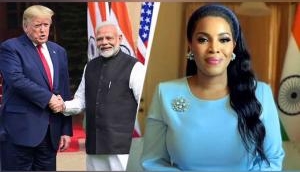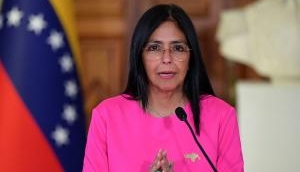Why there are violent protests against Nepal's 6-state plan

The draft
- Nepal\'s new draft constitution has the backing of the big parties
- The draft constitution moots a plan to form 6 states
- The states would amalgamate hills with plains
The problems
- Madhesis and Nepal\'s indegeneous people oppose the 6-state plan
- There have been violent protests against the draft constitution
- Several communities in south Nepal have felt marginalised
Nepal is on the boil. The draft constitution, that has the backing of all main political parties, has led to a lot of bad blood among the Himalayan country's janajatis (indigeneous people) and the Madhesis (inhabitants of Terai region).
The draft took a decade of negotiations, dating back to the 12-point agreement of November 2005 between the Seven Party alliance and the Communist Party of Nepal-Maoist (CPN-M).
Now the Nepali Congress, the Communist Party of Nepal-UML and the Unified CPN-M are in consensus over the draft constitution. They are backed by small party from the Madhes region of south Nepal.
But the draft's plan to have six provinces in Nepal, all sharing borders with India, have left ethno-regional groups the southern plains and the mid-west dissatisfied on the question of federalism.
The plan would require areas in the mountains and hills with the southern plains. This would be discriminatory against the janjatis and Madhesi communities, feel those opposed to the draft constitution.
The 1.7 million-strong Tharu community - Nepal's fourth-largest janajati - is the most unhappy as the six-state plan breaks up their main habitat.
Violent agitations broke out in western Nepal's Surkhet and Kailali districts in the first week of August. Three persons died in police firing, while more than a dozen were injured.
The agitations have continued and spread to other areas. Even many members of the Constitutuent Assembly (CA), across political parties, have expressed dissatisfaction with the plan.While several of them supported the demand for a separate Karnali state, some also opposed splitting the Baglung district, favouring an undivided Mid-West province.
The criticism and internal pressure forced the four-party alliance to reconsider the six-province plan. On 23 August, their leadership presented a revised draft that sought seven provinces, but not with a separate one for the Tharus.
The next day angry protests broke out, which soon turned violent. Demonstrators broke a curfew and attacked police officers with knives, spears and sickles.
They doused one officer with kerosene and set him on fire. At least nine persons have been killed, including police officers and three civilians. The toll could rise.
The government has already authorized officials of the four affected districts to call in the Army if needed. According to Bam Dev Gautam, the deputy prime minister and home minister of Nepal, troops were deployed in Kailali.
Indian Prime Minister Narendra Modi reportedly offered assistance and advised his Nepalese counterpart to conduct the widest possible consultation to accommodate "aspirations of all sections of the society."
The issue of federalism was at the core of the conflict in the first CA. The janajatis and the Madhesis - Nepal's historically marginalised communities - have long pushed for new provinces that could empower them to safeguard their identity and habitat and ensure autonomy.
The 6-state plan wold integrate hills and plains, an idea that madhesis & other groups are dead against
Nepal's ruling elite, however, rejected the model of a federation based on identity and ethnicity, saying it would hurt national unity.
The reason for the rejection of the six-state model is rooted in the history of Nepal. The model seems to have been adopted primarily for its potential for development-driven access to resources.
Alliance leaders and experts argue that the management and proper sharing of hydro-electric projects and irrigation require hills and plains be amalgamated.
The logic is similar to then one defining King Mahendra's five development zones, integrating hills and the plains. The development programme brought progress, but Madheshis felt discriminated against.
King Mahendra's land settlement programme had led to hundreds of thousands of people from the hills migrating to the Tarai, changing the demography and power balance of the region, particularly Kapilavastu, Chitwan, Jhapa, Nawalparasi, Kailali, Kanchanpur, Dang, and Morang districts.
The migrants were given cash grants and land that was taken away from locals. The Tharus were the first to lose their land.
The Tharus and Madhesis resent the fact that out of the 146,000 acres of land acquired by the state, nearly 90,000 acres was retained but the state refused to distribute that among the thousands of landless Tharu and Dalit families of Tarai, saying they did not possess citizenship certificates.
Even the multi-party governments, in power from 1991 to 2003, did not distribute land among the poor Tharus and Dalits.
The Panchayat regime restructured Madhes districts, increasing their count from 17 to 20 and included parts of the Shivalik and mid-mountains with the region.
This increased the population of those from the hills in the Tarai substantively. After four decades of migration, Nepali-speaking hill people are estimated to constitute about 30 percent of Tarai's population today.
The linguistic characteristics of the Madhesi districts have radically changed: According to the 1981 census of Nepal, in Jhapa, Chitwan, Dang and Kanchanpur, 67-85 percent of the population were from the hill linguistic groups.
Nepal's federal movement had challenged the validity of the nearly 250-year-old one-country-one-language-one-dress concept. King Mahendra's state-sponsored project imposed the culture, religion, and language of the majority community on all people of Nepal.
The People's Movement of 1990 and the mult-party democracy brought out the contradictions. The janajatis and Madhesis took part in the democracy movement, hoping their exclusion from the political mainstream would change.
A decade-and-a-half later, Nepal saw their robust movement described as identity politics. But it can also be seen as the transformation of passive resistance into organized aggressive assertion for the right to self-determination.
Since 2006, the federal question has overshadowed all other political issues in Nepal.Nepal's political elite now needs to come out of their problem-solving mode of quick fix accords. The new constitution needs move away from the practice of signing agreements with agitating parties and place people at the centre of policy.
First published: 28 August 2015, 1:34 IST





![BJP's Kapil Mishra recreates Shankar Mahadevan’s ‘Breathless’ song to highlight Delhi pollution [WATCH] BJP's Kapil Mishra recreates Shankar Mahadevan’s ‘Breathless’ song to highlight Delhi pollution [WATCH]](https://images.catchnews.com/upload/2022/11/03/kapil-mishra_240884_300x172.png)

![Anupam Kher shares pictures of his toned body on 67th birthday [MUST SEE] Anupam Kher shares pictures of his toned body on 67th birthday [MUST SEE]](https://images.catchnews.com/upload/2022/03/07/Anupam_kher_231145_300x172.jpg)






